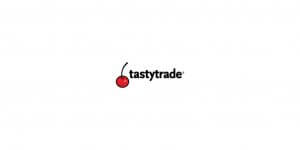The Convergence Of Traditional Finance And Crypto
According to the latest data, the global crypto market cap stands at $1.73 trillion at the time of writing. Part of this surge is due to the crypto market’s potential to be used as a hedge against current economic conditions in the traditional sphere.

The cryptocurrency market, albeit new, is entering hyper-growth mode.
According to the latest data, the global crypto market cap stands at $1.73 trillion at the time of writing. Part of this surge is due to the crypto market’s potential to be used as a hedge against current economic conditions in the traditional sphere.
A Surge In Institutional Investment
Although volatile, the crypto market offers promising opportunities for both retail and institutional investors. Thanks to the inherent features of the underlying blockchain technologies, cryptocurrencies offer a myriad of benefits like zero-dependency on intermediaries, seamless cross-border transactions, end-to-end security, data privacy, and transparency. Add to all these factors the limitless possibilities offered by the DeFi (decentralized finance) sector, and it becomes evident why an increasing number of retail and institutional investors are opting for digital assets.
As the global crypto market cap shot through the roof, the DeFi sector has also positioned itself as a safe haven for institutional investors and hedge fund managers. In the last couple of years, big names from the traditional finance industry have gradually entered the crypto ecosystem, indicating that the market is finally warming up to the idea of digital assets.
From closed communities created to shun the idea of crypto, to open forums discussing better ways to make crypto accessible and regulated – institutional influence has changed the dynamics of crypto, DeFi, and other related areas. In a study published by Fidelity Digital Assets, 52% of institutional investors reported investing in digital assets, and nine out of ten indicated they were actively exploring opportunities in this new and promising field.
Lowered Entry Barriers For Institutions
Exchanges, both centralized and decentralized, are playing key roles in helping lowermost of the barriers that once held institutional adoption back. The current digital market is well-equipped with the required infrastructure to facilitate institutional-grade services, paired with country-specific regulatory and compliance frameworks, thus offering institutions with more clarity on the evolving crypto and DeFi sectors.
At the same time, the crypto market is continuously maturing in terms of utility, thus making its way into the broader investment category – like the tech stocks of the equity market. Hence, investors are looking beyond the ever-so-popular “gold-like” store value of Bitcoin and are increasingly investing in utilities.
For instance, between 2020 and 2021, institutional investors heavily invested in Ethereum (ETH), Solana (SOL), Terra (LUNA), Binance Coin (BNB), and several other layer-1 cryptocurrencies. Meanwhile, many institutional investors are also expanding their crypto portfolio beyond layer-1 technology, investing in layer-2 scaling solutions, metaverse tokens, NFTs, and are also participating in the broader DeFi market.
This increased interest is certainly in favour of the crypto ecosystem, as it is not only helping to increase the market cap of digital assets overall, but also helps enhance trust and awareness of the nascent sector itself.
Traditional finance (TradFi) has been around for more than a hundred years. It includes a diverse range of financial offerings, most of which aren’t currently available in DeFi. As TradFi merges with DeFi, it will help DeFi expand into offering more financial solutions like unsecured loans, recurring deposits, and much more. Moreover, the TradFi sector’s experience in asset management, regulatory compliance, and other similar areas will also help the crypto ecosystem grow further.
Likewise, TradFi platforms can harness the power of blockchain technology to restructure their business models, which in turn will benefit both service providers and customers alike. By using the power of decentralization, peer-to-peer exchange, and other similar features, TradFi businesses can expand their services and introduce novel financial solutions that can be accessed by customers without geographical restrictions.
As institutional interest and investment in the blockchain and crypto sector are both on the rise, we may soon witness the golden age where traditional financial products and cryptocurrencies will become heavily correlated, driving the value of each other higher over time and reinforcing each other at the same time.
As stated in a recent blog post by AAX Academy, “we’ve been waiting for the institutions to come out and play in the crypto sandbox”, and now, more than ever, this seems to truly be happening. The year 2022 will be especially interesting with regards to this fascinating intersection in the field of finance, and we’ll be on the lookout to see this new reality unfold.









